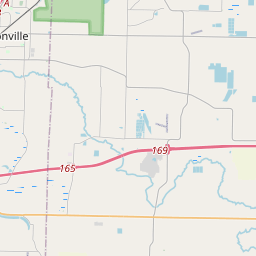Marmaduke-Walker Duel
Historical marker location:
South First Street, Jacksonville, Arkansas
( Marker is at the intersection of South First Street (Arkansas Route 161) and Lakeshore Drive, on the right when traveling south on South First Street.)
Marker installed: 2015







© OpenStreetMap contributors
Loading...
Searching for other points of interest within 3 miles of this location.The Ozark National Forest covers more than 1 million acres in northern Arkansas and is known for its scenic beauty and outdoor recreational opportunities. The forest contains numerous hiking trails, camping areas, and scenic drives.
About Pulaski County
Pulaski County Timeline
Pulaski County, located in the central part of Arkansas, has a long and rich history that dates back to its establishment in 1818. Named after Casimir Pulaski, a Polish nobleman who fought alongside American forces during the Revolutionary War, the county quickly became a hub of trade and government activity.
In the early years, the county seat was initially located in Little Rock, which also served as the territorial capital of Arkansas. The city grew rapidly, fueled by its strategic location along the Arkansas River and the development of steamboat transportation. As a result, Pulaski County was at the center of political, economic, and cultural events in the state.
During the Civil War, Pulaski County witnessed significant military action. Union forces occupied Little Rock in 1863, marking a turning point in the war in Arkansas. The area's agricultural resources, including cotton plantations, also made it an important target for both Union and Confederate forces.
After the war, the county continued to thrive. Reconstruction brought about significant changes, including the establishment of an integrated public school system and the construction of railroads that further boosted trade and transportation. Little Rock became the state capital in 1821, solidifying Pulaski County's role as a political and administrative center.
Over the years, Pulaski County has experienced growth and development, becoming the most populous county in Arkansas. Today, it remains an important economic and cultural hub, home to diverse industries, educational institutions, and vibrant communities that showcase the unique heritage and lively spirit of the county's history.
In the early years, the county seat was initially located in Little Rock, which also served as the territorial capital of Arkansas. The city grew rapidly, fueled by its strategic location along the Arkansas River and the development of steamboat transportation. As a result, Pulaski County was at the center of political, economic, and cultural events in the state.
During the Civil War, Pulaski County witnessed significant military action. Union forces occupied Little Rock in 1863, marking a turning point in the war in Arkansas. The area's agricultural resources, including cotton plantations, also made it an important target for both Union and Confederate forces.
After the war, the county continued to thrive. Reconstruction brought about significant changes, including the establishment of an integrated public school system and the construction of railroads that further boosted trade and transportation. Little Rock became the state capital in 1821, solidifying Pulaski County's role as a political and administrative center.
Over the years, Pulaski County has experienced growth and development, becoming the most populous county in Arkansas. Today, it remains an important economic and cultural hub, home to diverse industries, educational institutions, and vibrant communities that showcase the unique heritage and lively spirit of the county's history.
Pulaski County Timeline
This timeline provides a glimpse into the major events and milestones that have shaped the history of Pulaski County, Arkansas.
- 1818: Pulaski County is established as one of the original five counties in the Arkansas Territory.
- 1821: Little Rock, the county seat of Pulaski County, becomes the capital of the newly admitted state of Arkansas.
- 1836: The Arkansas State Penitentiary is established in Pulaski County.
- 1842: The first railroad, Cairo and Fulton Railroad, is completed in Pulaski County.
- 1863: The Battle of Bayou Fourche takes place in Pulaski County during the American Civil War.
- 1873: The Little Rock School District is established, marking the beginning of public education in Pulaski County.
- 1881: The University of Arkansas Law School is established in Little Rock.
- 1906: The Central High School is established in Little Rock.
- 1957: The Little Rock Nine, a group of African American students, are integrated into Central High School, marking a significant moment in the Civil Rights Movement.
- 1992: The William J. Clinton Presidential Library is established in Little Rock.
- 2001: The Pulaski County Special School District is established to oversee several school districts in the county.